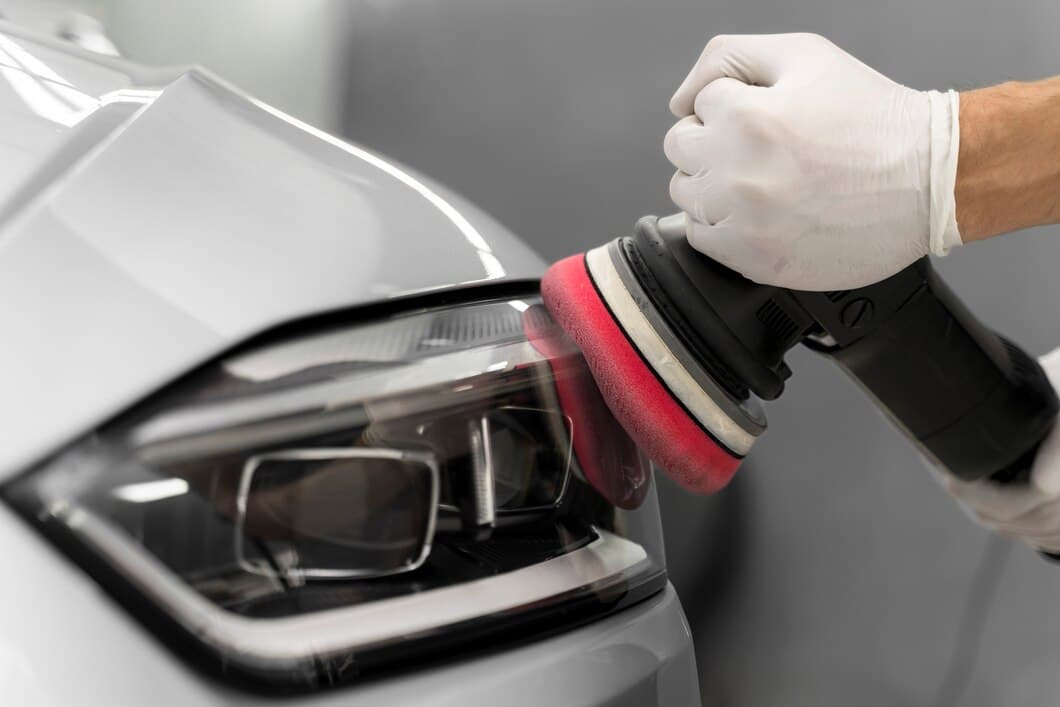
A wiper relay is a small but important part of your car's electrical system. Its job is to send power to the wiper motor, which in turn powers the windshield wipers.
When the wiper relay goes bad, it can cause a number of problems, including:
- The wipers may not work at all.
- The wipers may only work intermittently.
- The wipers may work too slowly or too quickly.
- The wipers may make a strange noise.
* What is a wiper relay?
A wiper relay is an electrical device that controls the operation of windshield wipers. It is typically located in the fuse box or under the dashboard and is responsible for turning the wipers on and off, as well as controlling their speed and intermittent operation. The wiper relay is a small, black box with several terminals and is usually labeled with the letters "WIPER".
When the wiper switch is turned on, the wiper relay receives a signal from the switch and sends power to the wiper motor. The wiper motor then turns the wipers on and off, and the wiper relay controls the speed and intermittent operation of the wipers.
* Where is the wiper relay located?
The wiper relay is typically located in the fuse box, which is usually under the dashboard on the driver's side. It is a small, black box with a number of wires connected to it. In some vehicles, the wiper relay may be located in the engine compartment, near the battery.
To find the wiper relay, you can consult your vehicle's owner's manual or look for a fuse box diagram on the inside of the fuse box cover. Once you have found the wiper relay, you can check if it is faulty by swapping it with another relay of the same type.
If the wiper relay is faulty, it can cause the wipers to not work or to work intermittently. It can also cause the wipers to move slowly or to stop working when the vehicle is turned off.
If you suspect that the wiper relay is faulty, you can test it using a multimeter. To do this, you will need to disconnect the relay from the vehicle's electrical system and then set the multimeter to measure continuity. Place one probe on each terminal of the relay and check if the multimeter indicates continuity. If the multimeter does not indicate continuity, the relay is faulty and should be replaced.
* How to test a wiper relay?
To test a wiper relay, you will need a multimeter. First, set the multimeter to the ohms setting. Then, locate the wiper relay in your vehicle. It is usually located under the dashboard or in the fuse box. Once you have located the relay, disconnect the electrical connector from it. Next, touch one probe of the multimeter to one of the terminals on the relay and the other probe to the other terminal. If the relay is working properly, the multimeter will display a reading of zero ohms. If the relay is not working properly, the multimeter will display a reading of infinity ohms.
Another way to test a wiper relay is to use a jumper wire. First, disconnect the electrical connector from the wiper relay. Then, connect one end of the jumper wire to one of the terminals on the relay and the other end to the other terminal. If the relay is working properly, the wipers will start working. If the relay is not working properly, the wipers will not start working.
* How to replace a wiper relay?

First, you'll need to locate the wiper relay. This is usually found in the fuse box, which is typically located under the hood of your car. Once you've found the fuse box, open it up and look for the wiper relay. It will usually be a small, black box with a few wires connected to it.
Once you've found the wiper relay, you need to disconnect the wires connected to it. Be careful not to damage the wires, as this could cause further problems. Once the wires are disconnected, you can remove the wiper relay from the fuse box.
* What are the causes of a bad wiper relay?
A bad wiper relay can be caused by a number of factors, including faulty wiring, a blown fuse, or a damaged relay itself. If the wiring is faulty, it can prevent the relay from receiving the necessary power to operate the wipers. A blown fuse can also prevent the relay from receiving power, and a damaged relay may not be able to send the necessary signals to the wipers to make them operate. In some cases, a bad wiper relay may also be caused by a problem with the wiper motor itself.
In addition to these factors, a bad wiper relay can also be caused by a problem with the wiper switch. If the wiper switch is faulty, it may not be able to send the necessary signals to the relay to operate the wipers. In some cases, a bad wiper relay can also be caused by a problem with the vehicle's electrical system. If the electrical system is not functioning properly, it may not be able to provide the necessary power to the relay to operate the wipers.
If you are experiencing problems with your wipers, it is important to have the issue diagnosed by a qualified mechanic. A mechanic will be able to determine the cause of the problem and recommend the best course of action for repairing it.
* What are the consequences of a bad wiper relay?
A bad wiper relay can lead to several consequences that affect the functionality and safety of your vehicle. Firstly, it can cause the wipers to malfunction, leading to reduced visibility during adverse weather conditions like rain or snow. This can significantly impair your driving ability and increase the risk of accidents.
Additionally, a faulty wiper relay can result in intermittent or erratic wiper operation, where the wipers may operate sporadically or at incorrect speeds. This can be frustrating and inconvenient, especially during heavy rain or snowfall. In some cases, a bad wiper relay may also cause the wipers to get stuck in the up or down position, blocking your view and further compromising safety.
* How to prevent a bad wiper relay?
Regularly clean the wiper blades and windshield to prevent dirt and debris from building up and putting strain on the relay.
Use high-quality wiper blades that are designed for your specific vehicle. Worn or damaged blades can draw more power from the relay.
Avoid using the wipers in extreme weather conditions, such as heavy rain or snowstorms, as this can put additional strain on the relay.
* Tips for maintaining a wiper relay
Regularly check the wiper relay for any signs of corrosion or damage. If the relay is damaged, it should be replaced immediately.
Keep the wiper relay dry and clean. Moisture and dirt can cause the relay to malfunction.
If the wiper relay is exposed to extreme temperatures, it should be protected with a heat sink.
The wiper relay should be tested regularly to ensure that it is functioning properly.
* Frequently asked questions about bad wiper relays
Wiper relays are an important part of your car's electrical system, and they can fail over time. If you're experiencing problems with your wipers, it's possible that the relay is to blame.
There are a few common symptoms of a bad wiper relay. One is that your wipers may not work at all. Another is that they may only work intermittently, or they may work only on a certain speed setting.
If you suspect that your wiper relay is bad, you can do a few things to test it. First, check the fuse for the wiper motor. If the fuse is blown, it will need to be replaced. If the fuse is not blown, you can try replacing the relay.
Replacing a wiper relay is a relatively simple process. However, it's important to make sure that you disconnect the battery before you start working on the electrical system. Once you've disconnected the battery, you can locate the wiper relay and replace it with a new one.
Frequently Asked Questions
How to identify a faulty wiper relay?
When a wiper relay fails, it can manifest in several symptoms that affect the functionality of your windshield wipers. These include erratic wiper movement, complete failure of the wipers to operate, intermittent wiping, and wipers that operate at an abnormally slow or fast speed.
What are the consequences of a faulty wiper relay?
A faulty wiper relay can have several negative consequences, particularly during adverse weather conditions. It can hinder your visibility and impair your ability to drive safely. Moreover, it can lead to premature wear and tear of your wiper blades, resulting in additional maintenance costs.
How to prevent wiper relay failure?
While it is not always possible to prevent wiper relay failure, there are certain measures you can take to minimize the risk. These include: Regularly servicing your vehicle, using high-quality wiper blades, and avoiding overloading your wiper system by using the wipers only when necessary.
How to troubleshoot a faulty wiper relay?
To troubleshoot a faulty wiper relay, you can start by checking the fuse associated with the wiper system. If the fuse is blown, replacing it may resolve the issue. If the fuse is intact, you can use a multimeter to test the relay for continuity and voltage. If the relay fails these tests, it should be replaced.
Summary
A faulty wiper relay can cause a variety of symptoms. Some common signs include intermittent or inoperative wipers, wipers that operate at the wrong speed, or wipers that stop working altogether. In some cases, a bad wiper relay may also cause other electrical problems, such as blown fuses or damage to the wiper motor.
If you suspect that your wiper relay is faulty, it is important to have it diagnosed and replaced by a qualified mechanic. Ignoring a bad wiper relay can lead to further problems, such as decreased visibility in inclement weather, which can be dangerous.